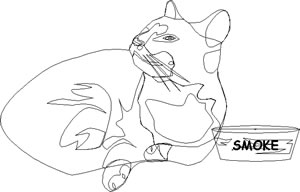Contributor Guide
Image Files Let's begin by defining what we mean when we say "graphic image" as opposed to a "photograph". A "graphic image" is intended to be used as part of a composition snapshot, as opposed to a "photograph", which is intended to be used as the main element of a composition snapshot. For example, even though the image of the pencil below is from a photograph, because it is cropped, has a transparent background, and is generally intended to be used in conjunction with other imagery, we consider it a "graphic image".  In most cases, designs using shapes and text would be better off being saved as a vector file (see below). In some cases, however, you may only have access to an image file, or your graphic image may be a derivative work from a photograph (such as the example above). All graphics images (non-photographs) must be saved as png files (see graphics submission requirements). It is also important to consider how end users will be utilizing your graphic image. Typically, the images will be used as part of a motion graphic sequence Keep in mind that end users may want to scale your images before they are included in their video projects. We therefore require images to be 1920x1080 px (or if cropped, they must fulfill at least one of these dimensions) so that they look good at our highest video resolution. Graphics images should be saved at the highest quality possible, while meeting file size specifications. PNG supports transparency, so be sure you are saving your png file with transparency where appropriate. Vector Graphics In addition to the content and quality of your vector file submissions, our editors will be looking for clean files that are easy to edit. Therefore, your file must contain ONLY vector elements, which can easily be moved and recolored. This section does not detail how to create your vector files, but rather provides a few quick tips on how to make sure your files are ready for submission. Clean Outlines Only vector files with clean outlines, that are easily editable will be approved. Make sure to clean up your files before submissions. Additionally, everything in your vector file should be visible when viewed as an outline.
Outlined Fonts All fonts in your vector file must be outlined or converted to paths.
| ||||||||||||||||||||||




